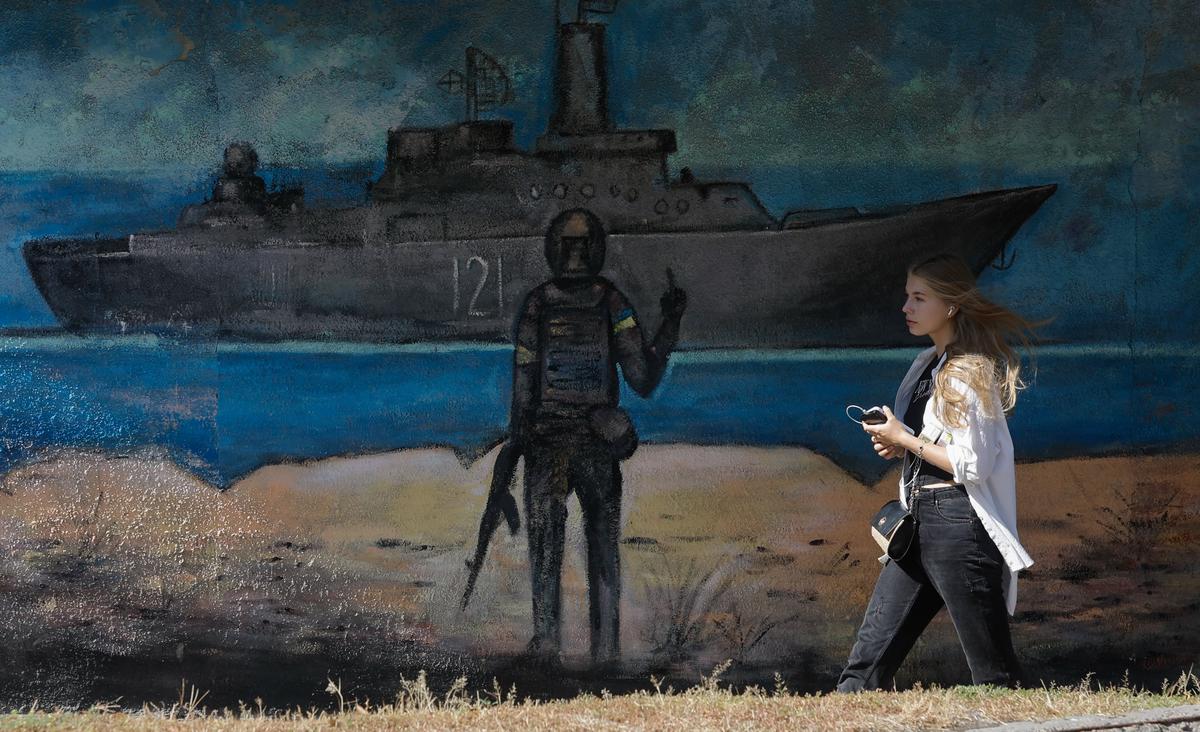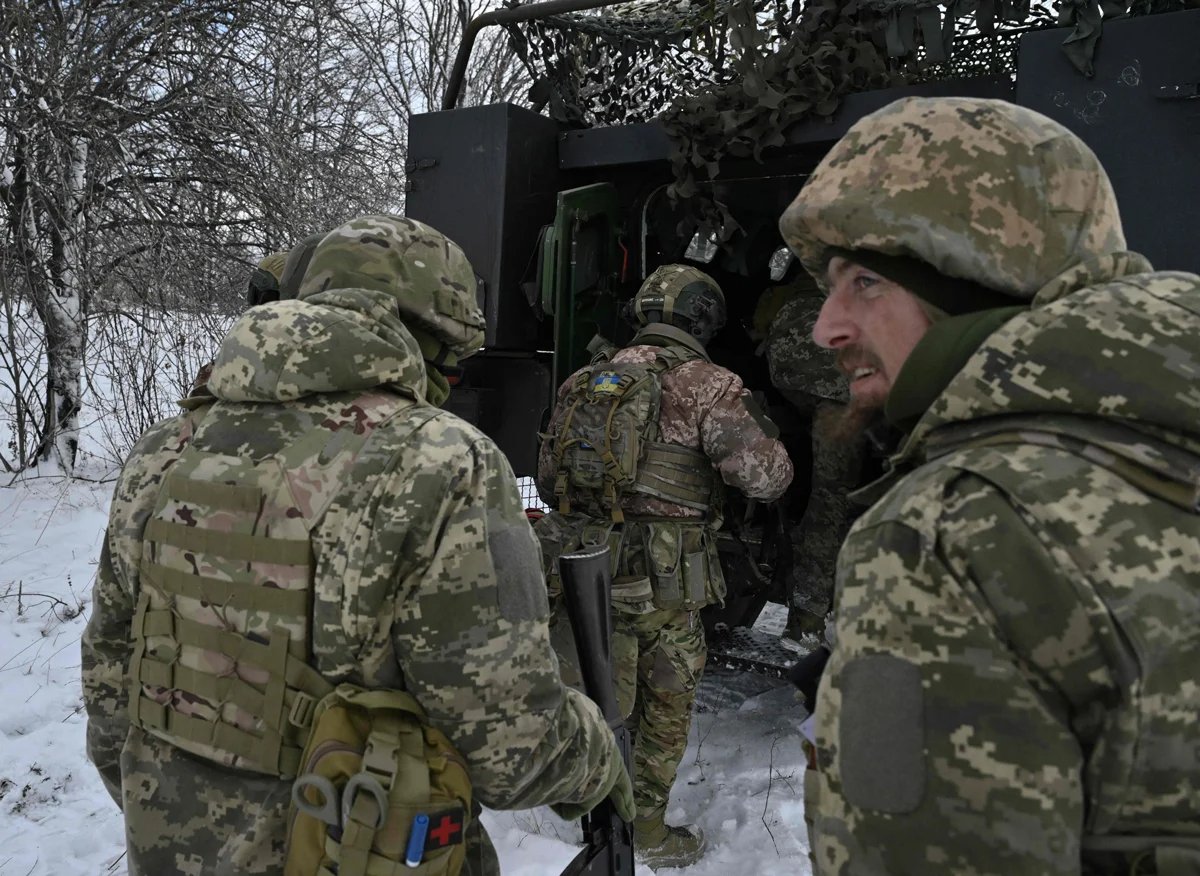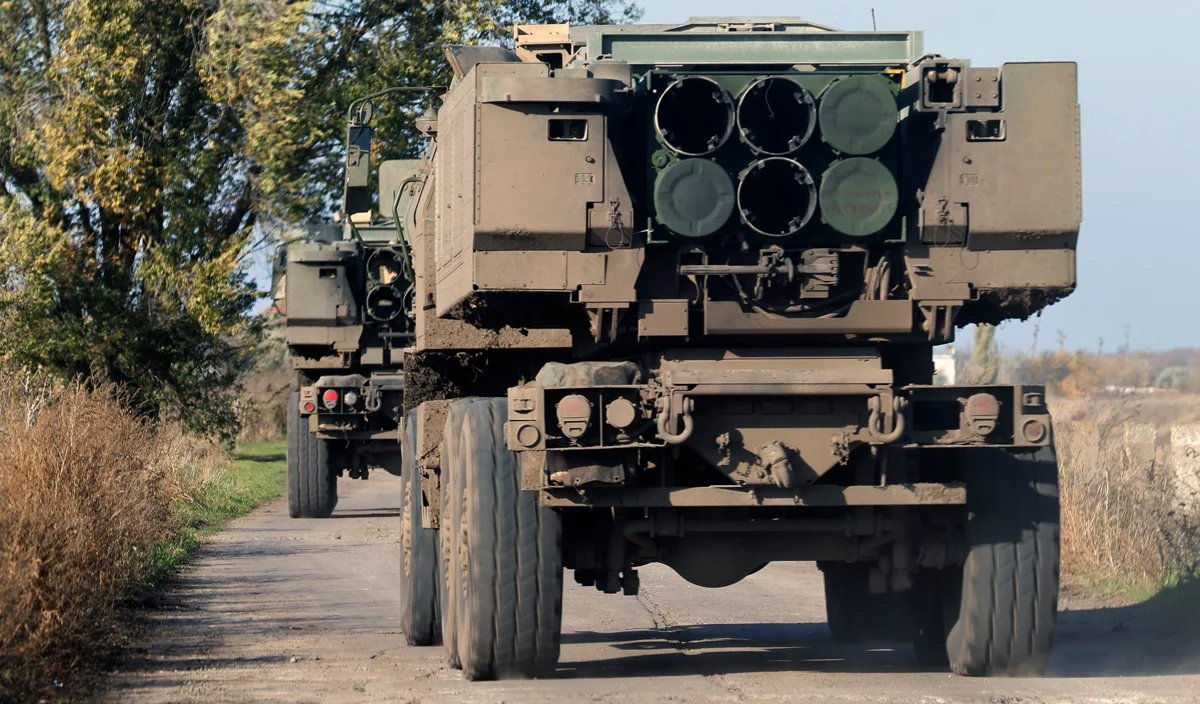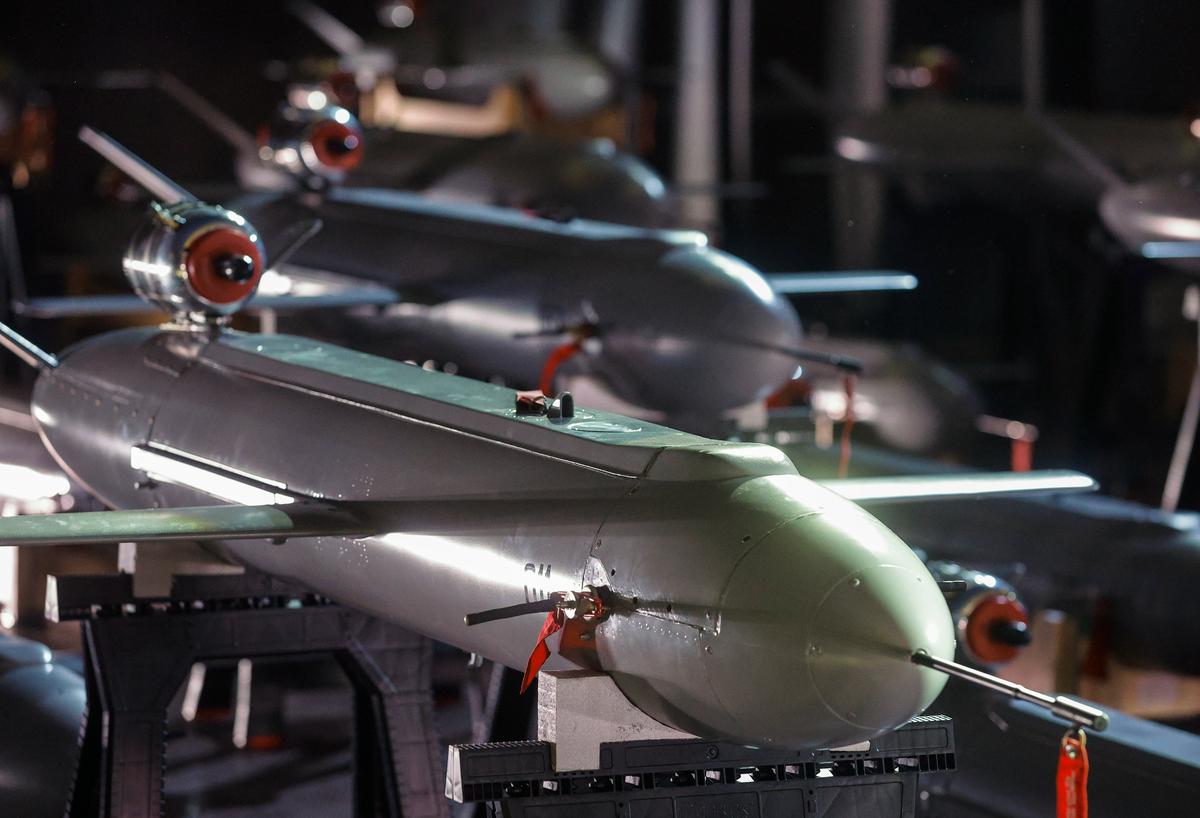



The Ukrainian leadership has understood only too clearly that US President Donald Trump’s unprecedented attacks on Ukrainian President Volodymyr Zelensky over the past week mean that Ukraine can’t count on Washington’s support as long as Trump is in the White House.
“The old days of America supporting Europe are over”, Zelensky said in a message to his European counterparts as much as to his own people. But can Europe now step up and step into the breach? Novaya Europe asked several analysts whether Ukraine could realistically continue its three-year resistance against the Russian invasion, and if so, for how long it might be able to hold out without US support.
“Think of it, a modestly successful comedian, Volodymyr Zelensky, talked the United States of America into spending $350 Billion Dollars, to go into a War that couldn’t be won, that never had to start, but a War that he, without the U.S. and “TRUMP,” will never be able to settle,” Trump wrote last week, before warning that “Zelensky better move fast or he is not going to have a country left”.

A Kyiv mural depicts the Ukrainian resistance to a Russian warship on Snake Island, off Ukraine’s Black Sea coast, 18 September 2023. Photo: EPA-EFE / SERGEY DOLZHENKO
The EU, meanwhile, has said it is ready to work together with the US to achieve a just and lasting peace in Ukraine. European Commission President Ursula von der Leyen stressed that “any resolution must respect Ukraine’s independence, sovereignty, and territorial integrity, backed by strong security guarantees”. She also said that the EU had allocated a total of €135 billion to maintain Ukraine’s financial stability and defence capabilities, “more than any other ally”, and that Brussels was ready “to do even more”.
Washington has provided Kyiv with military assistance to the tune of about $69.2 billion since the start of the war, according to a State Department estimate, while the overall total of military and non-military aid sent to Ukraine was put at $175 billion by the Council on Foreign Relations.
Ukraine can hold out for several more months without US military assistance, according to Lucien Kim, Senior Ukraine Analyst at the Washington-based International Crisis Group, though after that the shortfall in supplies would become critical, Kim told Novaya Europe.
However, according to Russian military analyst Kirill Mikhailov, estimating exactly how long Ukraine could hold out without US military assistance is virtually impossible. Among the variables to consider are how depleted Russia’s human and material resources are; the level of support Ukraine can expect from the EU in the event of US aid drying up totally; how much military aid Russian allies such as North Korea might be able to provide; and whether or not Ukraine is able to overcome its military recruitment problem.
It should be remembered that Ukraine has already survived once without US military assistance, when a bill allocating additional funding to Kyiv was stuck in Congressional deadlock from late 2023 until early 2024.
“The situation with artillery supplies was critical, but the front didn’t collapse and the Russians scored no strategic successes,” Mikhailov said, adding that in recent months US aid had been limited mainly to artillery, air defences and HIMARS multi-rocket launchers anyway.
“Europe can produce large supplies of ammunition, or purchase them from other countries, including the US, a scenario the Trump administration has discussed. They could also buy ammunition, for example, for HIMARS and Patriot systems in the same way or set up production in the EU,” Mikhailov continued.
The main question is whether the EU is willing to double its spending on Ukraine to compensate for the shortfall in US military aid given that they already know they’ll also now have to invest much more in their own defence spending, Mikhailov added.
Data on arms supplies is strictly classified in Ukraine, with figures on the production and stocks of weapons considered a military secret, making predictions all the more difficult, Ukrainian military expert Ivan Stupak told Novaya Europe.

Ukrainian servicemen undergo training in Ukraine’s Donetsk region, 16 February 2025. Photo: Genya Savilov / AFP / Scanpix / LETA
“From conversations with servicemen I know, I can say there is no shortage of ammunition, rations and the other things they need at the frontline. A year ago, for example, they were out of shells. The artillery were complaining about their very meagre stocks. That’s not a problem now. A shortfall may be felt eventually, but they have clearly backed up supply. Joe Biden awarded Ukraine a significant aid package at the end of his term. This was done precisely for fear that Trump would choke off the supply line,” Stupak says.
If negotiations reach an impasse and Trump ends military assistance to Ukraine once and for all, Kyiv would not immediately lose the war and the front would not collapse, Stupak said, adding that even though the Russians might then intensify their offensive, there would still be “no quick victory for Russia”.
Ukraine-based political scientist Georgy Chizhov told Novaya Europe that while the US probably wouldn’t stop providing military assistance to Kyiv altogether, it was impossible to predict Trump’s next move with any reliability.
Though Europe has the financial resources to fund a war, it doesn’t have the military production capacity to act as a substitute to the US.
“Trump would greatly undermine his reputation if he just turned off the tap, because, for one thing, I doubt the majority of Americans would support that,” Chizhov said, adding that if Trump did actually cut off all aid, “he would go down in history as the man who lost the Cold War,” explaining that while at the turn of the century the US was seen to have won the Cold War, that war had arguably been revived, and the US is currently seen as losing it. Trump ending his support for Kyiv “would be worse than the inglorious withdrawal of troops from Afghanistan, which had a very serious effect on Biden’s popularity”.
Trump’s harsh criticism of Zelensky is described by Chizhov as an emotional reaction to having his simplistic plan to end the war in Ukraine undermined by Zelensky’s refusal to go along with whatever Trump proposed. He added that the ad hominem attacks were also an attempt to intimidate Zelensky.
“I think Kyiv also takes these signals seriously. On the one hand, the president of Ukraine turns out to be a tough kid from Kryvyi Rih who knows when not to back down. But at the same time, when you are threatened by the authoritarian and eccentric ruler of the most influential country in the world, which had been your main ally until now, it gets you thinking,” Chizhov continued.

HIMARS multiple rocket launchers in Ukraine’s Kherson region, 29 October 2022. Photo: Hannibal Hanschke / EPA
Trump’s obvious annoyance and harsh criticism were no cause for panic in Ukraine, Chizhov added, as European leaders have signalled their willingness to step in and strengthen military assistance to Kyiv.
Though Europe has the financial resources to fund a war, it doesn’t have the military production capacity to act as a substitute to the US, says Kim. European assistance alone is not enough for Ukraine to carry on the fight, Stupak agrees, noting that European aid was often slow in coming too. In February 2023, the EU promised to supply Ukraine with 1 million artillery shells over the course of the year, but it took eight months for them to do so.
Europe hopes to increase its annual ammunition production to 2 million shells by the end of 2025, but those won’t all go to Ukraine, Stupak said. “A considerable amount will replenish the stockpiles held by European countries. And Ukraine needs at least 1.5 million shells a year to wage war,” he continued.
Stupak also said that Europe would likely be unable to supply some types of weaponry at all, such as ammunition for the Patriot air defence system, which is capable of shooting down Russian ballistic missiles.
“The US also shares intelligence, such as satellite images, with Ukraine. If that too is cut off, the Armed Forces of Ukraine will find it much harder to fight, and might not detect Russian missiles being launched at all,” Stupak added.
While both European- and American-produced shells are of very good quality, high-precision shells, such as the Excalibur, cost €5,000 each, whereas low-quality North Korean shells cost just €500 apiece, but “can be fired by the dozen to target a wide area”.

Ukrainian-made drone missiles on display during their handover to the Armed Forces of Ukraine in Kyiv, Ukraine, 6 December 2024. Photo: EPA-EFE / SERGEY DOLZHENKO
“Russia has also learned how to knock Excaliburs off course using electronic warfare, making their level of accuracy drop from 70% to 6%. They have lost all meaning. Ukraine also produces its own shells. Their number is kept secret. And there are complaints about their quality. But there is industrial production. Ukraine also produces thousands of first-person view drones. Now the production of fibre-optic drones has begun too. So in some areas, Kyiv doesn’t even need outside help,” says Stupak.
Europe is unlikely to be able to keep up its support for Ukraine easily on its own, according to Skorkin. The issue of European countries increasing their defence budgets, as Trump has repeatedly demanded, now tops the agenda, he stressed. Take Germany, which committed 2.12% of its GDP to military spending in 2024, twice as much as it did in 2014, but less, as a percentage, than it did in the 1960s, when, despite the tensions of the Cold War, there was no war on the continent.
“European governments face diminished capacity when it comes to the mass production of weapons, which was mothballed after the Cold War. No one expected a new arms race so soon. But to increase aid, we need to increase defence spending, which isn’t an easy sell to voters,” Skorkin concludes.
The Russian government has banned independent media. We were forced to leave our country in order to keep doing our job, telling our readers about what is going on Russia, Ukraine and Europe.
We will continue fighting against warfare and dictatorship. We believe that freedom of speech is the most efficient antidote against tyranny. Support us financially to help us fight for peace and freedom.
By clicking the Support button, you agree to the processing of your personal data.
To cancel a regular donation, please write to [email protected]
VPNovaya
Help Russians and Belarusians Access the Truth
